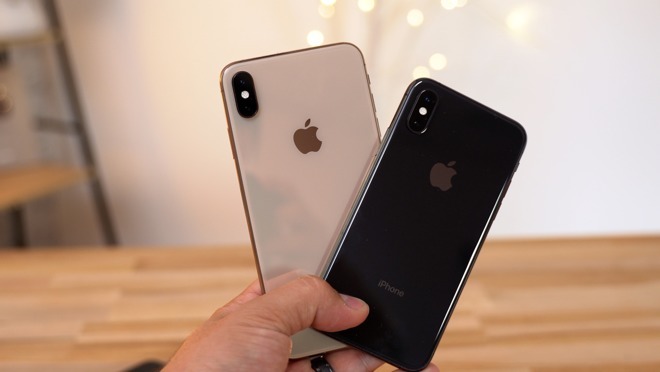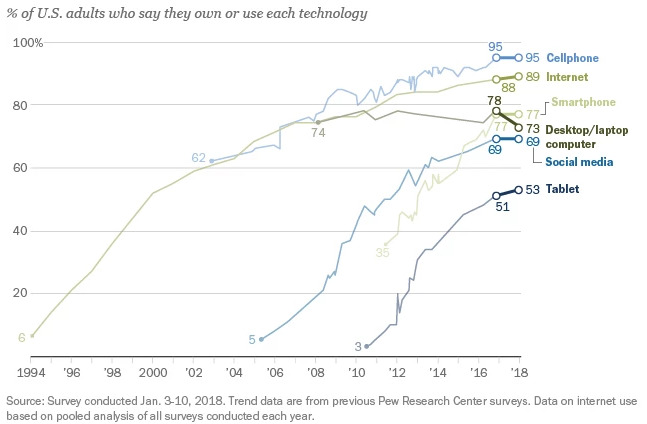Apple's efforts to continue growing its market share in the United States may be facing resistance from the market itself, as Pew research data indicates high levels of saturation for smartphones and cellphones, leaving few relatively few brand new customers to acquire.

The data, released by the Pew Research Center on Saturday, suggests that the overall use of Internet-connected devices and related services has remained in approximately the same state as was found in 2016. While previous surveys showed general growth trends across all monitored segments, the differences between 2016 and 2018's results are relatively minimal.
Approximately 95 percent of U.S. Adults in 2018 own and use cellphones, while 77 percent claim to own or use smartphones. The recorded results are notably the same values as found in 2016, just as discovered for social media's usage by 69 percent of adults.
Of elements that have changed, Internet use has grown from 88 to 89 percent, tablet usage has increased from 51 percent to 53 percent, and desktop or notebook computer usage has dropped from 78 percent to 73 percent.
"A contributing factor behind this slowing growth is that parts of the population have reached near-saturation levels of adoption of some technologies," writes Pew's Paul Hitlin. "Put simply, in some instances there just aren't many non-users left."

via Pew Research Center
Drilling down into specific groups, approximately 91 percent of people aged 18 to 49 currently own or use a smartphone, with 99 percent using some form of cellular communication, with college graduates measured at 91 percent and 97 percent respectively for each area. Smartphone penetration is also up to 93 percent for households with an income of $75,000 or more, with 98 percent owning or using a cellphone.
For tablet ownership and usage, like for the iPad, the figures again suggest the educated and the affluent to be the biggest users. While 55 percent of adults aged 18 to 49 say they own or use a tablet, higher than the 53 percent for all surveyed, the number grows to 66 percent for college graduates, and 72 percent for those with a $75,000 minimum household income.
With figures generally below 60 percent, the data suggests the iPad isn't encumbered by a saturation problem, and has a fair way to go before wide ownership and usage of tablets becomes a problem for sales.
While the saturation of the highly competitive U.S. market may be causing problems for increasing iPhone shipments for Apple, the company has already worked to continue the growth in other areas. Apple continues to make headway in growing and emerging markets that are far from saturation, such as China and India, meanwhile the higher average selling price created by the introduction of last year's iPhone X and this year's iPhone XS models will help increase iPhone-derived revenue.
In the United States specifically, Apple continues to enjoy a healthy lead over other smartphone producers, with domestic sales in the March quarter said to have been up 16 percent year-on-year in a May report. Furthermore, the same report revealed Apple had six of the 10 most popular smartphone models sold in the U.S in the first quarter, with the top five of the list made up of variants of the iPhone X and iPhone 8.